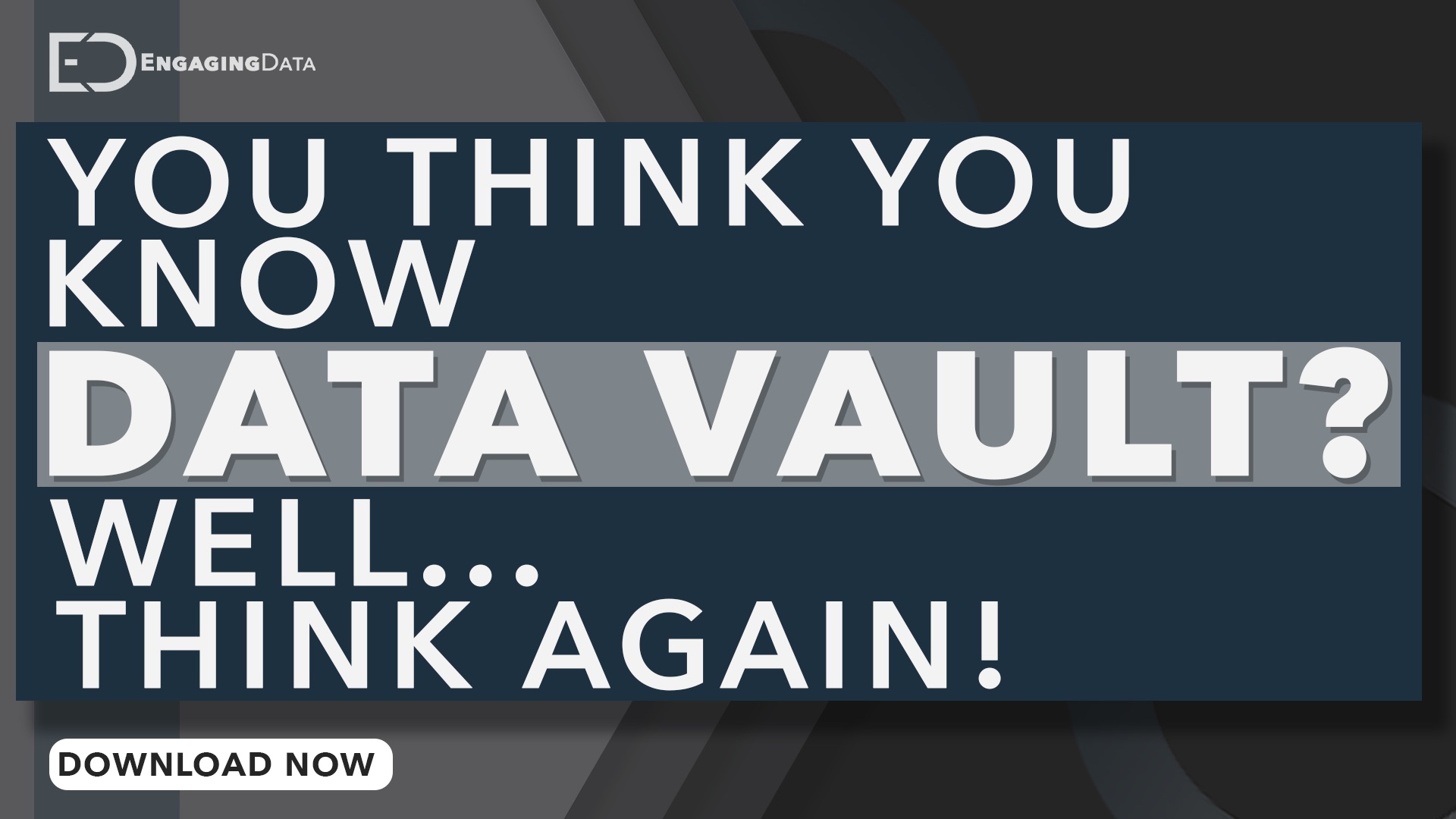Unlocking the Data Vault: A Detailed Exploration
Mastering the principles of Data Vault methodology is indispensable for organisations seeking to stay ahead in modern data architecture.
This blog post dives deep into Data Vault, offering insights into its core concepts, components, and why it’s pivotal for contemporary data strategies.
The Fundamentals of Data Vault
Data Vault methodology serves as a strategic approach to structuring and managing data warehouses, revolutionising the way organisation handle their data assets.
Unlike traditional methods, Data Vault provides a robust framework that promotes adaptability, scalability and efficiency in data management.
Key Components of Data Vault
Hubs: The cornerstone of Data Vault, hubs serve as centralised repositories for business keys, representing core business entities such as customers, products, or transactions.
Links: Links establish relationships between hubs, capturing the complex interconnections within the data model and enabling comprehensive analysis.
Satellites: Satellites store descriptive attributes and historical data associated with hubs, facilitating a holistic view of information over time and enabling trend analysis and historical reporting.
How to Implement Data Vault
Establish Clear Business Keys: Identify and define key business entities and their corresponding attributes.
Design Robust Hubs: Create hubs to represent core business entities, ensuring clarity, and consistency in data representation
Define Relationships: Establish links between hibs to capture relationships and dependencies within the data model.
Capturing Descriptive Data: Utilise satellites to store descriptive attributes and historical data, ensuring data integrity and enabling trend analysis.
Why Data Vault is Essential for Modern Data Architecture
In an era of big data, organisations face the challenge of managing vast volumes of information from diverse sources.
Traditional data modelling approaches often fall short of addressing the dynamic nature of data, leading to inefficiencies and missed opportunities.
Benefits of Implementing Data Vault
Achieve Scalability: Data Vault’s modular design allows for seamless scalability, enabling organisations to adapt to changing data volumes and requirements without costly redesigns or disruptions.
Ensure Flexibility: With its hub-and-spoke architecture, Data Vault accommodated changes and evolutions in data structures with minimal impact on existing systems, making it ideal for agile environments.
Enhance Data Quality: By capturing raw data in its purest form and maintaining a complete audit trail, Data Vault promotes data integrity and accuracy, reducing the risk of errors and inconsistencies.
Facilitate Rapid Integration: Data Vault’s standardised approach to modelling simplifies data integration, streamlining the process of onboarding new data sources and accelerating time-to-insight.
How to Implement Data Vault
Design Modular Structures: Structure data in a modular fashion to facilitate scalability and flexibility.
Adopt Hub-and Spoke Architecture: Implement a hub-and-spoke architecture to accommodate changes in data structures seamlessly.
Capture Raw Data: Capture raw data at its source to maintain data integrity and accuracy throughout the data lifecycle
Standardise Data Modelling: Standardise data modelling processes and methodologies to streamline data integration and analysis.
In conclusion, mastering the principles of Data Vault methodology is not just a necessity, but a strategic advantage.
By unlocking the Data Vault, organisations can harness the power of scalability, flexibility and data quality to drive innovation, efficiency, and competitive advantage.
As you navigate the complexities of modern data architecture, embracing Data Vault methodology empowers you to unlock the full potential of your data assets, paving the way for transformative insights and sustainable growth.
You Think You Know Data Vault? Well… Think Again!
Are you familiar with Data Vault? Do you harbour doubts or reservations about its efficacy?
It will challenge your assumptions, dispel misconceptions, and offer a fresh perspective on its powerful data modelling approach!
FAQs (Frequently Asked Questions)
What is Data Vault methodology?
Data Vault is a methodology for structuring and managing data warehouses in a way that promotes flexibility, scalability, and adaptability. It consists of hubs, links, and satellites to organize and manage data effectively.
Why is Data Vault important for modern data architecture?
Data Vault addresses the challenges of traditional data modelling approaches by offering a flexible, scalable, and agile framework. It allows organisations to handle large volumes of data efficiently and adapt to changing data environments effortlessly.
What are the key components of Data Vault?
The key components of Data Vault are:
– Hubs: Central repositories for business keys.
– Links: Establish relationships between hubs.
– Satellites: Store descriptive attributes and historical data.
Can Data Vault facilitate rapid integration of new data sources?
Yes, Data Vault’s standardized approach to modelling simplifies the integration of new data sources. It streamlines the process, reducing time-to-insight and enabling organisations to make informed decisions faster.

